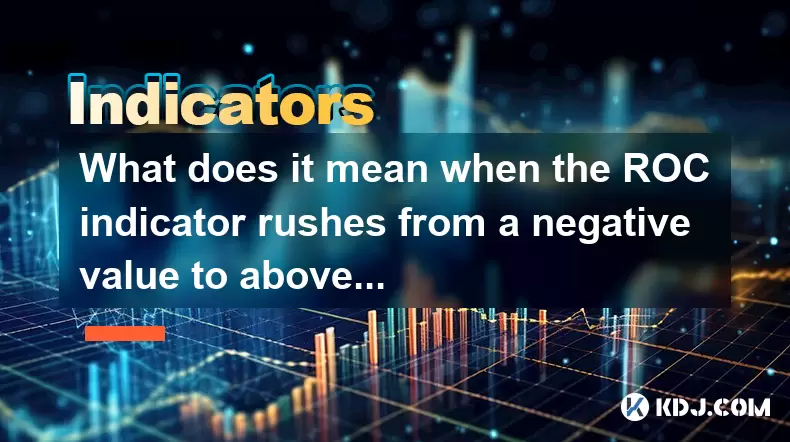-
 Bitcoin
Bitcoin $118000
0.67% -
 Ethereum
Ethereum $3750
0.71% -
 XRP
XRP $3.183
1.61% -
 Tether USDt
Tether USDt $1.000
-0.01% -
 BNB
BNB $788.1
1.21% -
 Solana
Solana $186.0
0.85% -
 USDC
USDC $0.9999
-0.02% -
 Dogecoin
Dogecoin $0.2373
1.25% -
 TRON
TRON $0.3204
1.76% -
 Cardano
Cardano $0.8266
1.85% -
 Hyperliquid
Hyperliquid $44.04
1.28% -
 Sui
Sui $4.192
5.88% -
 Stellar
Stellar $0.4399
2.63% -
 Chainlink
Chainlink $18.40
1.19% -
 Hedera
Hedera $0.2842
9.06% -
 Bitcoin Cash
Bitcoin Cash $560.5
2.46% -
 Avalanche
Avalanche $24.99
4.58% -
 Litecoin
Litecoin $114.5
1.25% -
 UNUS SED LEO
UNUS SED LEO $8.980
-0.03% -
 Shiba Inu
Shiba Inu $0.00001406
0.53% -
 Toncoin
Toncoin $3.306
4.27% -
 Ethena USDe
Ethena USDe $1.001
0.03% -
 Polkadot
Polkadot $4.169
2.37% -
 Uniswap
Uniswap $10.56
1.95% -
 Monero
Monero $322.8
1.06% -
 Dai
Dai $0.0000
0.00% -
 Bitget Token
Bitget Token $4.545
0.12% -
 Pepe
Pepe $0.00001261
1.29% -
 Aave
Aave $296.5
1.27% -
 Cronos
Cronos $0.1379
5.90%
What does it mean when the ROC indicator rushes from a negative value to above the zero axis?
A ROC indicator crossing from negative to positive signals rising bullish momentum, especially when confirmed by volume and other technical factors.
Jul 26, 2025 at 10:42 pm

Understanding the ROC Indicator and Its Core Function
The Rate of Change (ROC) indicator is a momentum oscillator used in technical analysis to measure the percentage change in price between the current closing price and a prior closing price from a specified number of periods ago. The formula for ROC is:
ROC = [(Current Close – Close n periods ago) / (Close n periods ago)] × 100
This calculation produces a value that fluctuates above and below a zero line. When the ROC is positive, it indicates that the price is higher than it was "n" periods ago, signaling upward momentum. Conversely, a negative ROC suggests that the price has declined over the same interval, reflecting bearish momentum. The zero axis serves as a pivotal reference point: crossing above it suggests strengthening bullish pressure, while crossing below signals increasing bearish sentiment.
Significance of a Negative to Positive Zero Cross
When the ROC indicator moves from a negative value to above the zero axis, it signals a shift in market momentum. This transition implies that the asset’s current price has surpassed the price from "n" periods earlier, indicating renewed buying pressure. Traders interpret this as a potential bullish signal, especially when it occurs after a prolonged downtrend or during consolidation. The speed or "rush" of this movement is critical — a sharp ascent suggests strong and immediate demand, possibly driven by news, institutional buying, or short-covering. The faster the ROC climbs above zero, the more conviction there may be behind the upward price movement.
Contextual Factors Influencing the ROC Signal
The reliability of the ROC crossing above zero depends heavily on the broader market context. A crossover in isolation may produce false signals, so traders must evaluate additional factors. For example, if the crossover occurs during a period of low trading volume, the momentum may lack sustainability. Conversely, a surge in volume concurrent with the zero cross enhances the signal’s credibility. Additionally, alignment with other technical indicators — such as the Relative Strength Index (RSI) emerging from oversold territory or a bullish MACD crossover — increases the probability of a valid trend reversal. The time frame also matters: a zero cross on a daily chart carries more weight than one on a 15-minute chart.
How to Use the ROC Crossover in Trading Strategies
Traders can incorporate the ROC zero cross into their strategies using the following steps:
- Identify the ROC setting: Common periods include 12, 14, or 25, depending on the trader’s time horizon. Shorter periods make the indicator more sensitive.
- Monitor for negative-to-positive transitions: Set alerts or visually scan charts for the moment the ROC line crosses above zero.
- Confirm with price action: Look for bullish candlestick patterns, such as a hammer or bullish engulfing, near support levels.
- Check volume indicators: Use on-balance volume (OBV) or volume bars to verify increasing participation.
- Apply stop-loss orders: Place stops below recent swing lows to manage risk if the momentum fails.
- Set profit targets: Use Fibonacci extensions or prior resistance levels to determine exit points.
This approach helps filter out noise and improves the odds of capturing genuine momentum shifts.
Common Misinterpretations and Risk Management
A frequent mistake is treating every ROC zero cross as a guaranteed buy signal. In ranging markets, the indicator may produce false breakouts where price briefly moves above prior levels but quickly reverses. To mitigate this risk, traders should avoid acting on the signal in sideways markets unless confirmed by breakout patterns. Another issue arises in highly volatile assets, where rapid price swings can cause the ROC to whipsaw around the zero line. Using a smoothing technique, such as applying a moving average to the ROC itself, can reduce noise. Position sizing should also be adjusted — smaller entries are advisable when confirmation is weak.
Practical Example Using Bitcoin (BTC) Chart
Consider a scenario on the BTC/USDT daily chart with a 14-period ROC. Suppose Bitcoin has been declining for three weeks, and the ROC has remained below zero, reaching -8%. Suddenly, positive macroeconomic news triggers a buying surge. Over two days, Bitcoin’s price rises sharply, and the ROC jumps from -3% to +2.5%. This rush above zero coincides with a 50% increase in trading volume and a close above a key moving average (e.g., 50-day SMA). A trader observing this would note the confluence of factors: momentum shift, volume confirmation, and technical breakout. They might enter a long position with a stop-loss at the recent low and target the next resistance zone.
Frequently Asked Questions
What time frame is best for observing ROC zero crossovers?
The optimal time frame depends on the trader’s strategy. Swing traders often use the daily chart with a 12- to 14-period ROC, as it balances sensitivity and reliability. Intraday traders may prefer a 5-period ROC on the 1-hour chart, while long-term investors might analyze weekly data with a 25-period setting. Higher time frames generally provide stronger signals with fewer false entries.
Can the ROC indicator be used in sideways markets?
In sideways or choppy markets, the ROC frequently crosses the zero line without sustained follow-through, leading to whipsaw losses. It is less effective in such environments unless combined with range-bound strategies, such as fading extremes. Traders should use additional tools like Bollinger Bands or support/resistance levels to determine whether the market is trending or consolidating before relying on ROC signals.
How does the ROC differ from the MACD in detecting momentum shifts?
While both are momentum indicators, the ROC measures pure percentage change over a fixed period, offering a direct view of price acceleration. The MACD, however, uses moving averages and includes a signal line for crossover analysis. ROC reacts faster to price changes, making it more sensitive, whereas MACD provides smoother, lagging signals with built-in trend-following components. ROC is better for detecting sudden bursts, while MACD excels in sustained trend identification.
Should traders use the ROC indicator alone or with other tools?
The ROC should not be used in isolation. It performs best when combined with volume analysis, price patterns, and other oscillators. Relying solely on ROC increases the risk of false signals, especially in volatile crypto markets. A robust strategy integrates ROC zero crosses with confluence from at least two other independent indicators or chart features to improve accuracy.
Disclaimer:info@kdj.com
The information provided is not trading advice. kdj.com does not assume any responsibility for any investments made based on the information provided in this article. Cryptocurrencies are highly volatile and it is highly recommended that you invest with caution after thorough research!
If you believe that the content used on this website infringes your copyright, please contact us immediately (info@kdj.com) and we will delete it promptly.
- Meme Coins in July 2025: Bitcoin Takes a Backseat?
- 2025-07-27 10:30:12
- HIFI Price Eyes Breakout: Downtrend Line in the Crosshairs?
- 2025-07-27 10:30:12
- Troller Cat's Meme Economy Prowess: Presale ROI and Viral Domination
- 2025-07-27 10:50:12
- Bitcoin Price Tumble: Chart Patterns Point Downward?
- 2025-07-27 10:50:12
- Ethereum's Bullish Case: Flag Pattern Points to $4,800?
- 2025-07-27 11:10:18
- Ethena (ENA) & Anchorage Digital: A Genius Partnership Sparking a Stablecoin Revolution
- 2025-07-27 11:10:18
Related knowledge

What signal does the ROC send when it rises rapidly from a low level and breaks through the zero axis?
Jul 27,2025 at 10:15am
Understanding the Rate of Change (ROC) IndicatorThe Rate of Change (ROC) is a momentum-based oscillator used in technical analysis to measure the perc...

What does it mean that the rebound is blocked after the moving average is arranged in a short position for the first time?
Jul 26,2025 at 10:51am
Understanding the Short-Term Moving Average ConfigurationWhen traders refer to a 'short position arrangement' in moving averages, they are describing ...

What does it mean that the parabolic indicator and the price break through the previous high at the same time?
Jul 26,2025 at 07:22pm
Understanding the Parabolic Indicator (SAR)The Parabolic SAR (Stop and Reverse) is a technical analysis tool developed by J. Welles Wilder to identify...

What does it mean that the price falls below the short-term moving average after the RSI top divergence?
Jul 26,2025 at 11:01pm
Understanding RSI Top Divergence in Cryptocurrency TradingThe Relative Strength Index (RSI) is a momentum oscillator widely used in cryptocurrency tra...

What does it mean when the moving average is arranged in a bullish pattern but the MACD bar is shortened?
Jul 27,2025 at 06:07am
Understanding the Bullish Moving Average PatternWhen traders observe a bullish moving average pattern, they typically refer to a configuration where s...

What does it mean when the price rises along the 5-day moving average for five consecutive days?
Jul 26,2025 at 08:07am
Understanding the 5-Day Moving Average in Cryptocurrency TradingThe 5-day moving average (5DMA) is a widely used technical indicator in cryptocurrency...

What signal does the ROC send when it rises rapidly from a low level and breaks through the zero axis?
Jul 27,2025 at 10:15am
Understanding the Rate of Change (ROC) IndicatorThe Rate of Change (ROC) is a momentum-based oscillator used in technical analysis to measure the perc...

What does it mean that the rebound is blocked after the moving average is arranged in a short position for the first time?
Jul 26,2025 at 10:51am
Understanding the Short-Term Moving Average ConfigurationWhen traders refer to a 'short position arrangement' in moving averages, they are describing ...

What does it mean that the parabolic indicator and the price break through the previous high at the same time?
Jul 26,2025 at 07:22pm
Understanding the Parabolic Indicator (SAR)The Parabolic SAR (Stop and Reverse) is a technical analysis tool developed by J. Welles Wilder to identify...

What does it mean that the price falls below the short-term moving average after the RSI top divergence?
Jul 26,2025 at 11:01pm
Understanding RSI Top Divergence in Cryptocurrency TradingThe Relative Strength Index (RSI) is a momentum oscillator widely used in cryptocurrency tra...

What does it mean when the moving average is arranged in a bullish pattern but the MACD bar is shortened?
Jul 27,2025 at 06:07am
Understanding the Bullish Moving Average PatternWhen traders observe a bullish moving average pattern, they typically refer to a configuration where s...

What does it mean when the price rises along the 5-day moving average for five consecutive days?
Jul 26,2025 at 08:07am
Understanding the 5-Day Moving Average in Cryptocurrency TradingThe 5-day moving average (5DMA) is a widely used technical indicator in cryptocurrency...
See all articles

























































































